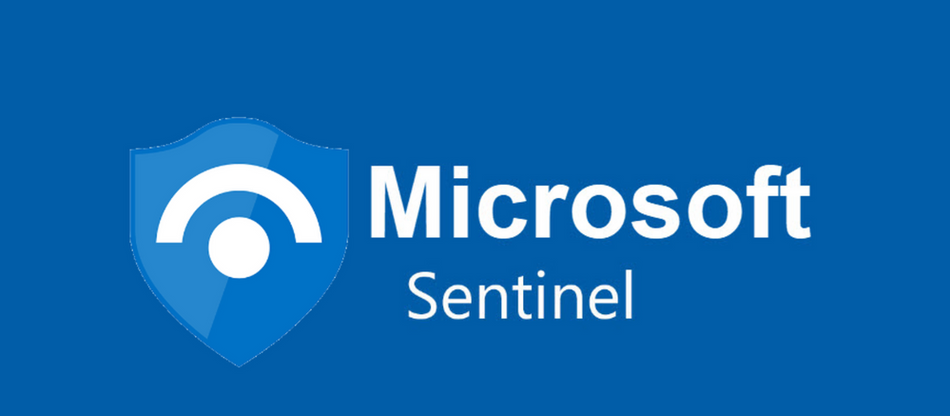15
+
YEARS OF
EXPERIENCE
1000
+
SUCCESSFUL
Projects
80
+
Satisfied
Clients

Navigating the complexities of cybersecurity management requires robust, scalable, and clever solutions. Microsoft Sentinel stands out as a leading cloud-native Security Details and Event Management (SIEM) system that empowers enterprises to detect, investigate, and respond to threats efficiently. Though understanding the total cost of ownership-including implementation expenses crucial for decision-makers aiming to maximize their security investments. This article explores the critical factors influencing Microsoft Sentinel Implementation Cost, helping IT leaders evaluate their options with clarity and confidence.
Understanding Microsoft Sentinel Implementation Cost: Key Components and Considerations
Implementing Microsoft Sentinel extends beyond just licensing fees; it involves a multi-dimensional cost structure shaped by data ingestion volumes, customization, integration requirements, and ongoing management. At its core, Sentinel’s pricing model is consumption-based, meaning that the volume of data ingested directly impacts the monthly charges. Organizations must consider costs related to data connectors, incident response automation, and workspace retention settings, all of which influence expenses.
Moreover, implementation involves initial setup work such as configuring data connectors to integrate security logs from various sources-on-premises or cloud-based. This setup phase requires skilled expertise to align Sentinel’s advanced analytics and playbooks with the organization’s security policies and threat landscape. Professional services fees, including consulting, deployment, and training, are additional factors when calculating the total cost. These professional engagements ensure that Sentinel is deployed efficiently, tailored to specific business needs, and fully operational from day one.
enterprises should factor in ongoing operational costs tied to managing and optimizing Sentinel’s environment. Leveraging a trusted partner like Tech Cloud IT Services L.L.C, operating as Cloud Technologies, can provide access to experienced professionals who streamline implementation, optimize data ingestion strategies, and enable cost-effective scaling.







Breaking Down Microsoft Sentinel Implementation Costs: Benefits, Challenges, and Investment Insights
Microsoft Sentinel delivers powerful cloud-native security operations, but understanding its cost structure is key to maximizing return on investment. This guide outlines the major cost components, benefits, and challenges associated with implementing Sentinel, along with actionable strategies to optimize spending and performance.
1. Understand the Core Cost Components
- Consumption-Based Pricing: Sentinel operates on a pay-as-you-go model, charging based on data ingestion and retention volumes.
- Data Retention Options: Retention ranges from a few days to several months, with longer retention increasing storage costs.
- Data Ingestion Management: For organizations with heavy log volumes, efficient data filtering and management policies help prevent cost overruns.
- Best Practice: Use data analytics and cost monitoring tools to forecast and manage usage proactively.
2. Optimize Scalability and Elasticity
- Start Small and Scale Gradually: Deploy Sentinel in stages, beginning with high-value workloads before expanding organization-wide.
- Elastic Infrastructure: Sentinel’s cloud-native design eliminates the need for expensive on-premises infrastructure investments.
- Governance Controls: Without monitoring, elastic scaling can inflate costs—set clear limits for ingestion rates and alert rules.
3. Apply Automation and Smart Governance
- Automated Alert Rules: Reduce noise and control costs by designing alert rules that focus on critical events.
- Data Categorization: Tag and organize data sources to simplify tracking and cost allocation across departments.
- Proactive Monitoring: Regularly audit ingestion and retention patterns to identify underutilized or redundant data sources.
4. Recognize Common Implementation Challenges
- Diverse Data Integration: Onboarding various cloud and on-premises data sources can require specialized configuration.
- Rule Customization: Prebuilt detection rules may not align with your specific risk landscape—tailoring them is essential.
- SOAR Workflow Alignment: Integrating Sentinel’s automation with existing Security Orchestration, Automation, and Response (SOAR) tools can be complex but highly valuable.
- Opportunity: Overcoming these challenges enables organizations to tailor Sentinel for optimal efficiency and threat coverage.
5. Maximize Long-Term Value
- Enhanced Threat Visibility: Gain unified insight across hybrid and multi-cloud environments.
- Proactive Threat Management: Use built-in analytics and automation to detect and mitigate incidents faster.
- Compliance Alignment: Streamline adherence to security frameworks such as GDPR, HIPAA, and ISO 27001 with built-in templates.
6. Partner with Experts for Cost-Effective Deployment
Partnering with experienced providers like Cloud Technologies helps organizations implement Sentinel efficiently and cost-effectively. Our specialists conduct detailed cost analyses, optimize data pipelines, and provide continuous support—empowering clients to leverage Sentinel’s full potential while maintaining budget discipline.
Strategic planning and expert guidance transform Microsoft Sentinel from a complex investment into a sustainable foundation for modern cybersecurity.

Partnering with specialists during implementation ensures a smoother deployment process and cost openness. Optimized configurations reduce unnecessary data ingestion, while personalized training empowers security teams to maximize efficiency and accelerate response times.
Microsoft Sentinel Implementation Cost in Action: Real-World Case Studies and Strategic Approaches
Considering real-world examples provides valuable insights into how organizations across industries manage Microsoft Sentinel implementation costs strategically. As a notable example, a mid-sized financial services firm approached implementation by focusing on ingesting only high-priority logs and executing finely tuned retention policies. By limiting data ingestion to critical sources and leveraging Cloud Technologies’ expertise in setting up efficient logic app playbooks, they reduced projected costs by over 30% compared to a standard full ingestion model.
Similarly, a multinational manufacturing company adopted a phased deployment approach with Microsoft Sentinel, starting with core cloud workloads and extending gradually to on-premises infrastructure. Working alongside Tech Cloud IT Services L.L.C., they implemented automation routines that expedited threat detection and reduced manual efforts, offsetting operational costs while maintaining strong security postures.
Another notable example involves a healthcare provider tailoring Microsoft Sentinel’s analytics rules to address compliance mandates like HIPAA. The measured onboarding of data connectors combined with retention policies optimized for regulatory requirements, guaranteed cost-effectiveness without compromising security monitoring capabilities. Throughout these engagements, partnering with Cloud Technologies translated into accelerated deployment timelines and clear budgeting supported by detailed cost projections.
These case studies highlight the importance of strategic planning when embarking on your Microsoft Sentinel journey. Leveraging expert consultation helps organizations avoid common pitfalls such as data overload and unmanaged escalation of expenses. With the right implementation model, organizations achieve a balance between comprehensive security insights and enduring cost structures.

answer time
satisfaction
score
on initial call
same business
day
Maximizing your Microsoft Sentinel Investment with Expert Guidance
Navigating Microsoft Sentinel implementation costs requires a blend of strategic foresight, technical expertise, and ongoing operational discipline. As explored, costs are influenced by data ingestion levels, professional services, customization, and continuous management. Yet the true value lies in how these investments translate into resilient cybersecurity frameworks capable of detecting and responding to modern threats effectively.
At Tech Cloud IT Services L.L.C, trading as Cloud Technologies, we understand these nuances deeply. Our holistic approach encompasses detailed cost analysis, tailored implementation planning, and continuous optimization to safeguard your business assets without budget overruns. We prioritize transparency, empowering clients with clear projections and actionable insights to manage costs proactively.
Security is not a one-time project but a continual journey that demands adaptable solutions. Microsoft Sentinel’s cloud-native architecture facilitates flexible scaling, making it an ideal choice for enterprises aiming to future-proof their security operations. To unlock the full potential of your investment, connect with us for a personalized consultation. Let our experienced team guide your Microsoft Sentinel implementation, ensuring maximum efficiency, enhanced protection, and cost-effective outcomes.
Take the next step, contact us, and discover how Cloud Technologies can help you control implementation expenses while strengthening your security posture.


